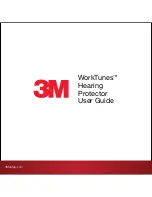
DET-882
SecoGear Medium-voltage Switchgear Application and Technical Guide
Standard SecoGear Construction, Features, and Installation
©2017 General Electric All Rights Reserved
55
SECTION 6.
STANDARD SECOGEAR CONSTRUCTION, FEATURES, AND INSTALLATION
This section of the Application and Technical Guide
explains the standard construction of SecoGear Metal-clad
switchgear, providing details on equipment features and
installation.
DOCUMENTATION
The standard support files generated by GE digital tools
provide diagrams and general information about SecoGear
Metal-clad switchgear, including
•
Device summary
•
Elementary diagram (power and control circuits
showing each contact, coil, wire, and terminal point)
•
Connection/interconnection diagram, showing physical
location of devices, terminal blocks, and internal wiring
•
Arrangement drawing (simple one-line diagram, front
view, side views, and floor plan)
The standard documentation does not include special
formatting, showing equipment other than the switchgear
and direct connections.
CONSTRUCTION
Indoor Equipment
SecoGear Metal-clad switchgear is designed and
constructed to meet the requirements of IEEE C37.20.2 for
indoor installations with a NEMA 1 enclosure. A complete
lineup of a SecoGear switchgear connects as many vertical
sections as needed, splicing each section side by side with
electrical and mechanical connections.
Each SecoGear vertical section can accommodate up to
two circuit breakers or a combination of four VT/CPT fuse
rollout trays in a self-supporting structure with a steel
frame and reinforcing gussets, front and rear doors, top
and side covers fabricated with 2 mm thick steel. For more
information on the different stacking configurations of
SecoGear, refer to Figure 1-5 through Figure 1-26.
SecoGear is equipped with grounded metal shutters in
front of the primary bushings. The shutters are
automatically operated by the circuit breaker movement.
When the circuit breaker is racked out to the “Test” or
“Disconnect” positions, the shutters automatically close to
isolate the fixed primary contacts. See Figure 6-1 for
shutters in closed position.
Figure 6-1: Breaker Compartment
SecoGear internal construction is designed to meet
ANSI/IEEE Metal-Clad standards, using metal barriers to
isolate primary compartments, such as the breaker, main
bus, power termination and auxiliary compartments. The
rollout trays are also furnished with 3 mm thick steel front
plate that isolates the secondary control from the primary
compartments.
SecoGear can be accessed through hinged doors in the
front and the rear of each vertical section. Two half-height
doors mounted on the front with quarter turn latches, and
two on the rear with four hex-knob closing screws on each
door.
Protection devices and control and instrumentation
devices will be mounted on the front doors of the
associated breaker compartment. Surface-mounted
accessories, such as fuse blocks and terminal block will be
mounted in locations within the associated breaker
compartment.
Hardware
All standard assembly hardware is high tensile strength
steel (SAE grade 8), which is plated to resist corrosion.
Breaker Compartments
Racking a SecoVac VB2+ circuit breaker in or out the
switchgear compartment allows the breaker to roll on
horizontal guide rails guiding the breaker directly to the
primary contacts while continuously grounded. To operate
the racking mechanism, insert the racking handle and
rotate the handle clockwise until the position indicator
shows the breaker in “connected” position.
To rack the breaker to the “Test/Disconnect” position,
rotate the racking handle counterclockwise until the
position indicator shows the breaker in the “Test” position.














































